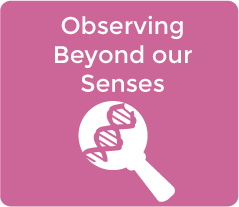CCC4 Crosscutting Concept 4 – Systems and System Models
 see.isbscience.org/ngss/ccc4/
see.isbscience.org/ngss/ccc4/Systems and System Models are useful in science and engineering because the world is complex, so it is helpful to isolate a single system and construct a simplified model of it. “To do this, scientists and engineers imagine an artificial boundary between the system in question and everything else. They then examine the system in detail while treating the effects of things outside the boundary as either forces acting on the system or flows of matter and energy across it—for example, the gravitational force due to Earth on a book lying on a table or the carbon dioxide expelled by an organism. Consideration of flows into and out of the system is a crucial element of system design. In the laboratory or even in field research, the extent to which a system under study can be physically isolated or external conditions controlled is an important element of the design of an investigation and interpretation of results...The properties and behavior of the whole system can be very different from those of any of its parts, and large systems may have emergent properties, such as the shape of a tree, that cannot be predicted in detail from knowledge about the components and their interactions.” (p. 92)
“Models can be valuable in predicting a system’s behaviors or in diagnosing problems or failures in its functioning, regardless of what type of system is being examined... In a simple mechanical system, interactions among the parts are describable in terms of forces among them that cause changes in motion or physical stresses. In more complex systems, it is not always possible or usefulto consider interactions at this detailed mechanical level, yet it is equally important to ask what interactions are occurring (e.g., predator-prey relationships in an ecosystem) and to recognize that they all involve transfers of energy, matter, and (in some cases) information among parts of the system... Any model of a system incorporates assumptions and approximations; the key is to be aware of what they are and how they affect the model’s reliability and precision. Predictions may be reliable but not precise or, worse, precise but not reliable; the degree of reliability and precision needed depends on the use to which the model will be put.” (p. 93)






